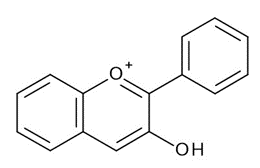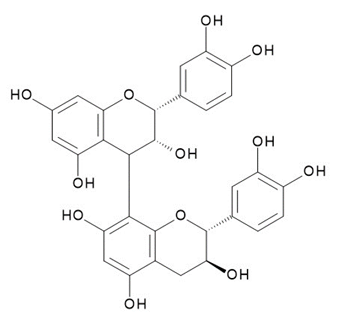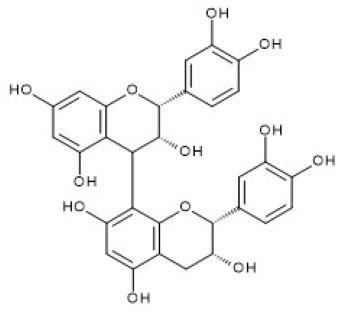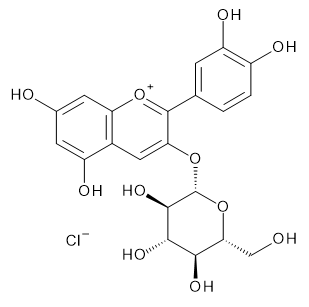Anthocyanidins

Basic structure of Anthocyanidin
Anthocyanidins, which are a class of polyphenols, are flavonoids having an anthocyanidin as their basic structure. Pelargonidin, cyanidin, delphinidin, and their O-methyl derivatives are known as naturally occurring anthocyanidins.
Compounds composed of a sugar or organic acid bound to an anthocyanidin are called anthocyanins, of which there are many kinds with different types, numbers, or binding positions of the binding sugar/organic acid. Anthocyanins are pigment components widely distributed in plants such as flowers and fruits. Their color broadly changes depending on the conditions including pH and temperature, for example, to red when acidic and blue when basic.Many anthocyanidins have antioxidant activity. Notifications of foods with functional claims have been submitted for apple- and pine bark-derived procyanidins and bilberry-derived anthocyanin.
Fujifilm Wako offers a wide range of reference standards for the analysis of various anthocyanidins.
Procyanidin
Procyanidins (proanthocyanidins) are compounds with several bound catechins or epicatechins. They are hydrolyzed to anthocyanidins. Notifications of foods with functional claims have been submitted for foods containing procyanidins as “apple-derived procyanidin” or “pine bark-derived procyanidin.”Apple-derived procyanidin has been reported to have a function to reduce visceral fat and mainly contains procyanidin B2.
The Japanese Agricultural Standards (JAS) 0024 specifies a method for determining procyanidins in apple juice (high performance liquid chromatographic method) ), which quantifies a series of peaks corresponding to the retention time of procyanidin B2 as procyanidins.Pine bark-derived procyanidin has been reported to have a function to reduce low-density lipoprotein (LDL) cholesterol and mainly contains procyanidins B1 and B3.
Fujifilm Wako offers a wide range of reference standards for the analysis of various procyanidins.
Anthocyanin
Anthocyanins are pigment components that have a structure of a sugar or organic acid bound to an anthocyanidin and are widely distributed in flowers and fruits. Their color broadly changes depending on the conditions including pH and temperature, for example, to red when acidic and blue when basic.
Anthocyanin-containing foods have been reported to maintain eye health and have antioxidant effects. Notifications of foods with functional claims, including bilberry-derived anthocyanin, have been submitted.
As there are many kinds of anthocyanins, a method to quantify the total amount of anthocyanins using one anthocyanin as the standard is commonly used. For example, in the quantification of bilberry-derived anthocyanins, individual anthocyanin contents in the sample are calculated as cyanidin 3-glugoside chloride, and these are then summed to determine the total anthocyanin content.1)
Fujifilm Wako distributes the reference standard of cyanidin 3-glugoside chloride for the analysis of anthocyanins.
- Masada, S. et al.: Jpn. J. Food Chem. Safety, 24 (1), 32 (2017).
Product List
- Open All
- Close All
For research use or further manufacturing use only. Not for use in diagnostic procedures.
Product content may differ from the actual image due to minor specification changes etc.
If the revision of product standards and packaging standards has been made, there is a case where the actual product specifications and images are different.







